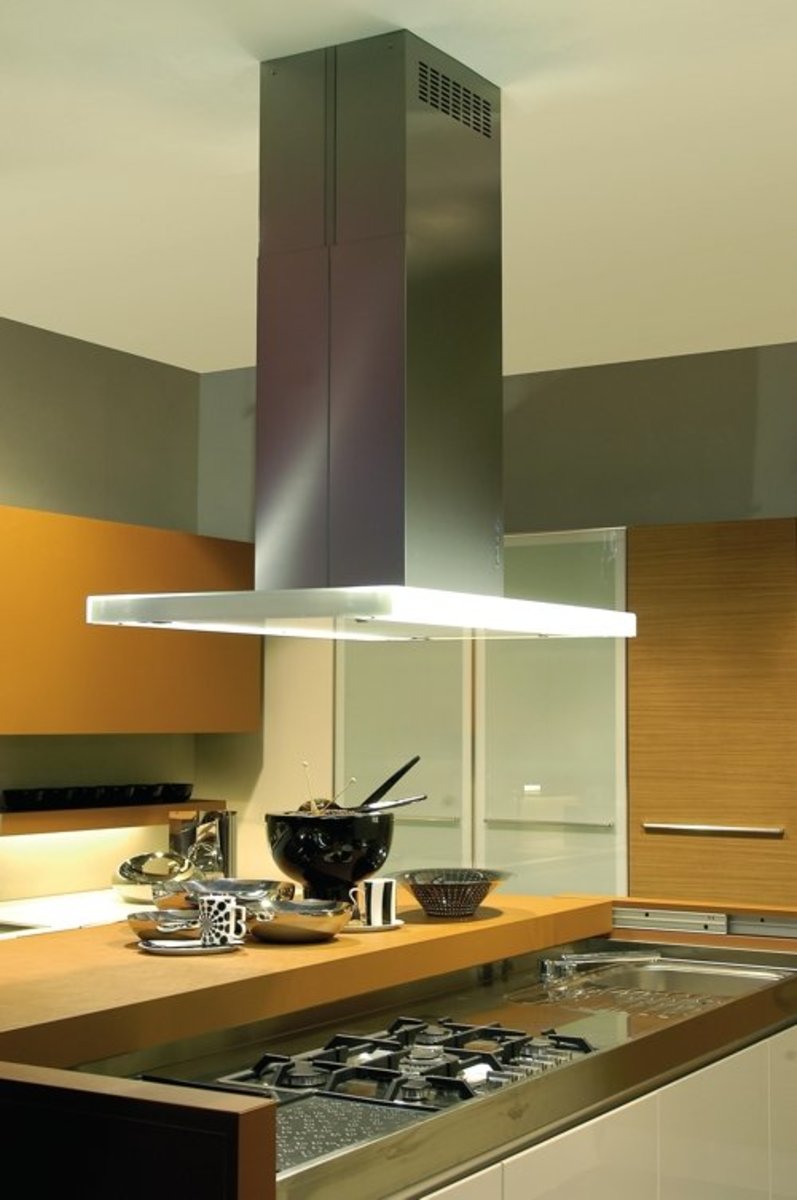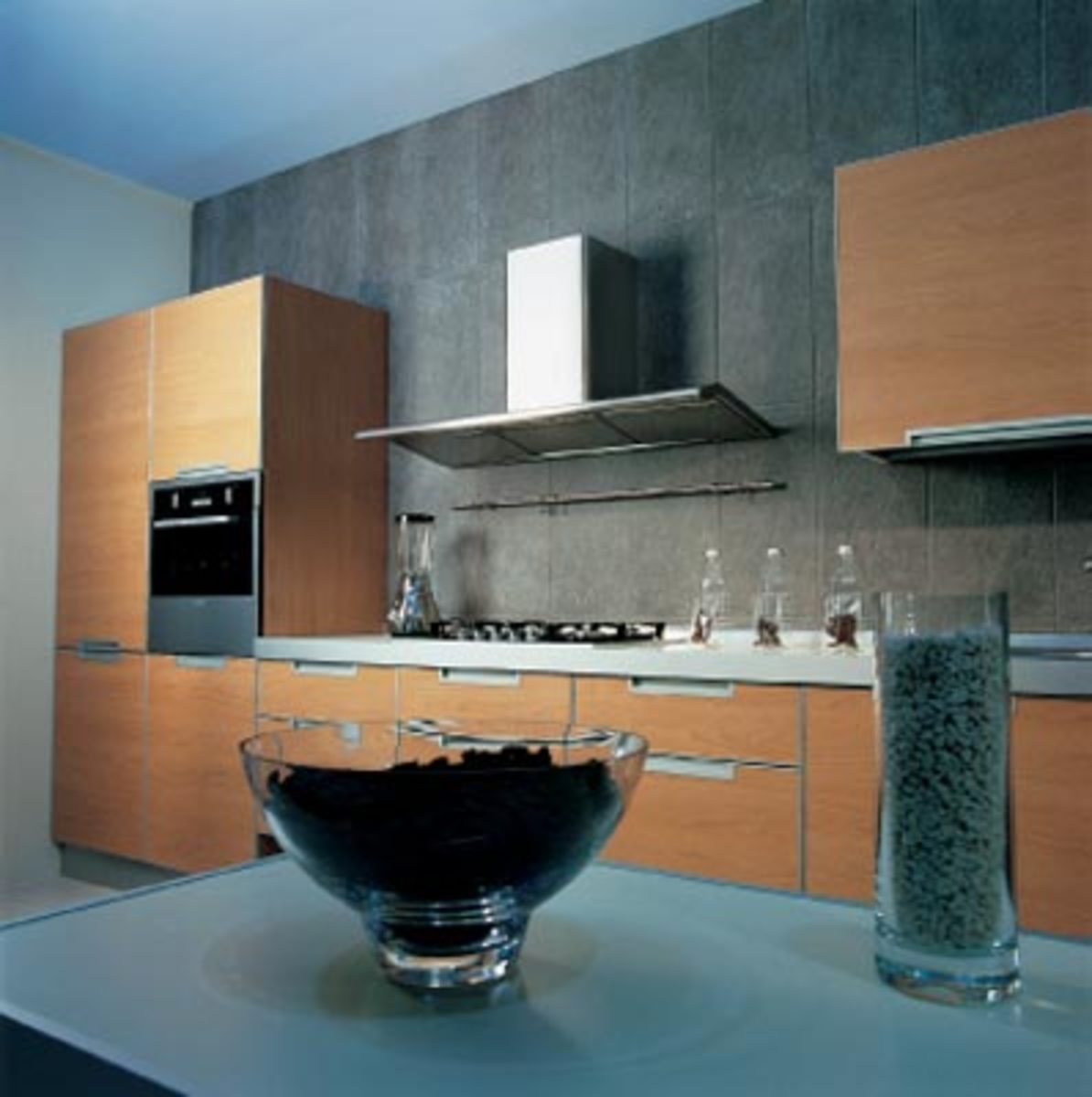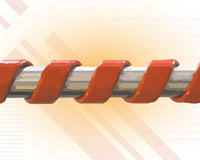Purpose Of A Range Hood
Have you ever had to clean a kitchen that’s used on a regular basis? Then you know just how much of a hassle it is to get rid of that sticky film that covers all the cabinets and countertops, especially next to the cooking area. One of the benefits of a range hood is that it filters out the airborne grease before it has a chance to settle everywhere and cause major headaches at cleanup time. Instead of spending hours on scrubbing kitchen surfaces (usually with cleaning chemicals involved as well), it’s much easier to hit the power button on the range hood and stop the flying grease in its tracks.
As any professional chef can tell you, cooking without a range hood can be quite uncomfortable. Heat, steam, odors, and smoke being blown right in your face can really try your patience - unless there’s a powerful range hood providing suction and maintaining a steady flow of fresh air. This is why every professional kitchen, such as those you might see on cooking shows, features a large vent hood above the range.
Having an effective way to remove odors also allows greater freedom to experiment with various cuisines. All the things you’ve wanted to try making, but weren’t sure about due to the possibility of the entire house smelling like dinner for days afterwards? Once you have a range hood, there’s no need to worry any longer. Fish, spices, exotic vegetables and sauces are back “on the table” once the cooking odors are eliminated.
Of course, the health benefits of kitchen ventilation cannot be overlooked. By eliminating the excess moisture and airborne grease, as well as preventing the formation of the sticky film that attracts mold and bacteria, and encouraging the inflow of fresh outside air, a properly installed and ducted range hood can vastly improve the air quality - not only in the kitchen but throughout the house. This is especially important for anyone with allergies and breathing problems, but everyone can enjoy the benefits of a range hood. After all, who doesn’t like fresh air?
As you can see, there are plenty of benefits to having a range hood. From the obvious ones (clean air) to the not-so-obvious secondary effects (cleaner cabinets and creative cooking freedom), adding this important appliance to your kitchen is a significant improvement. But how do you choose the right one? There are literally tens of thousands of range hoods on the market - where do you begin? Without going into too many details, here’s a short overview of the basic types of range hoods, which may help you to narrow down your selection.


Range Hood Installation Type
Island-mount (or “ceiling-mount”) range hoods, as their name implies, are attached to the ceiling. If your cooktop/range is going to be on a center island or peninsula, this is the type of range hood that will be required to ventilate it. If that sounds like a lot of additional work, you’re right - it usually takes a contractor to install an overhead range hood, but it’s well worth it for the ventilation benefits it will provide.
Wall-mount (also called “chimney style”) are installed on the wall directly above the range. Note that this requires a clearance between the cabinets as well as some empty wall space above the range, typically eliminating the possibility of having an over-the-range microwave or upper cabinet. However, the advantage is that a full-size range hood will provide much more ventilation power than an “undercabinet” hood or a combination rangehood/microwave.
Undercabinet range hoods, as well as microwave/rangehood (so-called “microhood”) combinations do provide an inexpensive alternative, but as the old saying goes, “you get what you pay for”. Their small size severely limits the power of the fan/blower, making their performance far less impressive than the suction power of a full-size overhead range hood.
Range Hood Venting Type
Most full-size range hoods (island-mount or wall-mount) can be either ducted out or used in recirculating installation. If you’re restricted to using a recirculating hood (for example, in a high-rise condominium or a co-operative building, neither of which will typically allow an outside duct to be added), check with the range hood manufacturer whether the hood you’re considering has an option to be used in such a fashion. Sometimes, you may have to purchase additional parts in order to convert a range hood to recirculation, other times the “recirculating kit” may be included.






